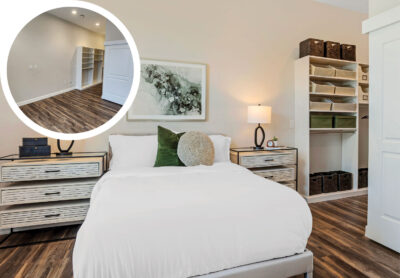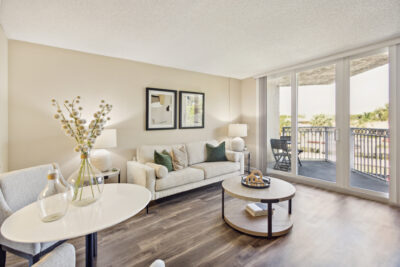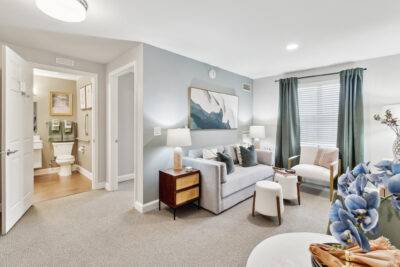When faced with budgetary constraints for designing and installing a model apartment, your first instinct might be to outsource the job to a local community manager or even a leasing agent.
The upfront cost of using a commercial interior design firm for model apartment staging can certainly seem higher than the price of a do-it-yourself approach—at least at first glance. But when you factor in all the hidden costs of taking the DIY route, you could end up spending thousands of dollars more than you anticipated.
Breaking Down the Costs of DIY Model Apartment Staging

Let’s examine some of the hidden costs of model apartment DIY:
1. Your team’s investment of time
Every hour of your team’s time is valuable—and that goes for hourly and salaried employees. If you plan to have your team manage and execute the model apartment staging process, expect it to take about 100 hours for interior design, procurement, delivery, and installation for a one-bedroom apartment.
One hundred hours is equivalent to 2.5 full weeks of pay. And those hours spent on interior design and project management take employees away from performing the vital tasks in their job descriptions, like assisting current residents, finding new leads, and fulfilling administrative duties.
2. Missed leasing opportunities
The one job your leasing agent or community manager should probably be allocating 100 hours a month toward is increasing occupancy.
If they’re spending over half of one month designing and installing a model apartment, that means they’re missing opportunities to set up appointments, give tours, and close new deals.
Those missed opportunities don’t just occur in the month when your team is working on the model, either. A unit that sits empty means missed lease revenue every single month. If your employee is spread too thin and their conversion rate drops, the lost revenue can add up to tens of thousands of dollars over the course of a single year.
3. Less competitive pricing
Amateur interior designers simply don’t have the same leverage as a commercial interior design firm when making purchases.
Without an expert in your corner, you won’t be able to negotiate wholesale pricing based on volume purchasing or capitalize on industry relationships. You’ll pay full retail pricing for each product, and the costs will add up quickly.
4. Unforeseen expenses
You may incur unexpected costs as you build out your model, especially if you’re trying to avoid using too much of your employees’ time for design and installation.
Tasks like moving furniture and clearing away trash from the premises can require the help of outside professionals. If you didn’t plan for costs like renting a dumpster or hiring moving service to help lift heavy objects, you’re likely to end up well over budget.
5. Lower conversion rates
Designing a model to suit prospective residents’ preferences and lifestyles is key to converting leads to leases. If you don’t consider this factor when you design the apartment, the model might not be successful at all.
And if you’re trying to cut corners on costs, you could end up buying lower quality furniture that further discourages prospective residents.
A true model apartment staging expert knows how to design for occupancy to achieve the desired lead-to-lease conversion rates.
At Model55, we provide turnkey model apartment design and installation services, managing the entire process from concept to completion. When you work with us, you’ll know exactly what you’re paying for every step of the way—no hidden costs or fees. Our goal is to deliver the best ROI on your investment. Contact us today to learn more about maximizing your apartment staging budget!





